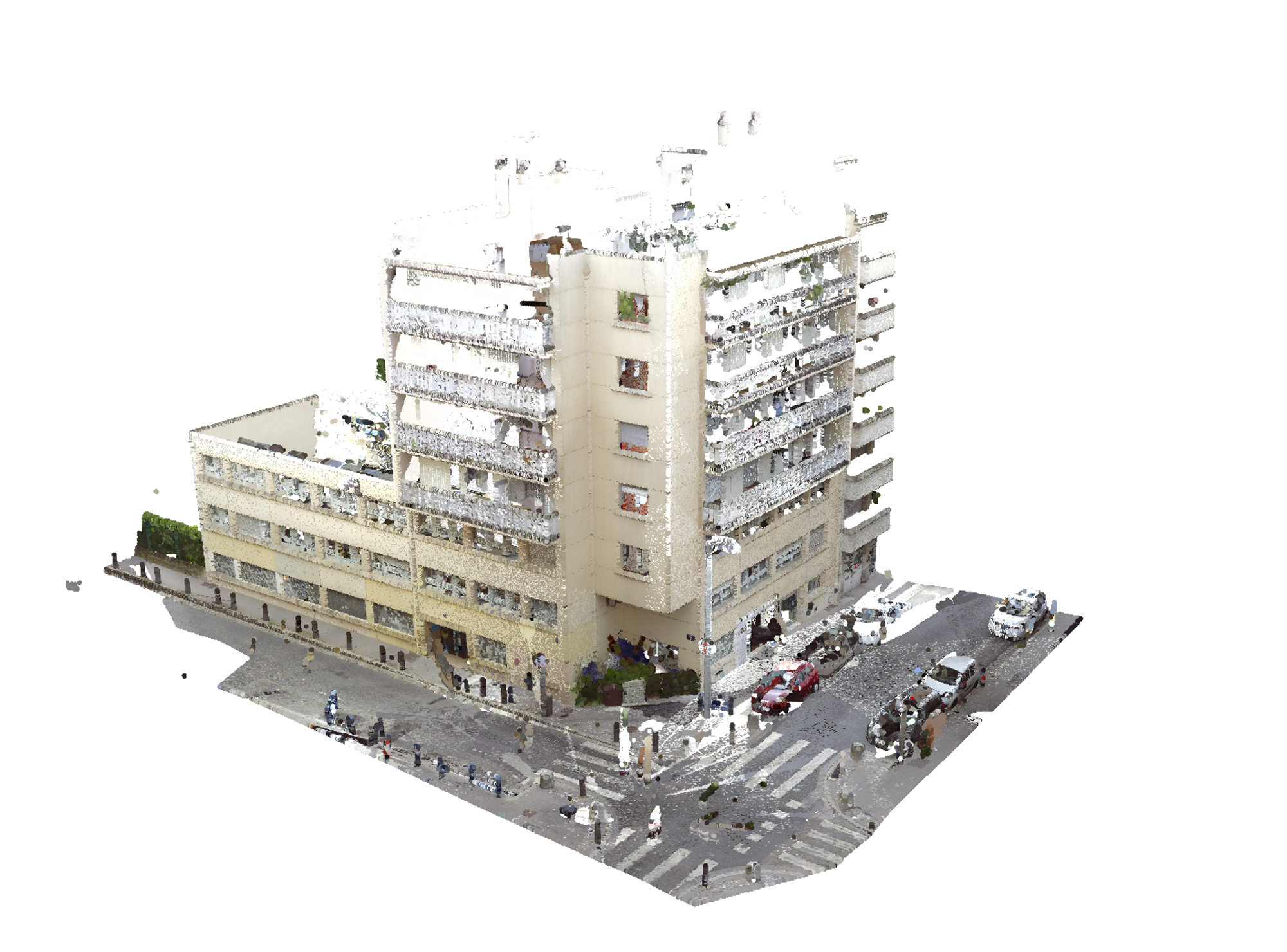Viewing a glTF Point Cloud with XKTLoaderPlugin
Introduction
In this mini-tutorial, we'll use xeokit's convert2xkt CLI tool to convert a point cloud model from LAS/LAZ into xeokit's native XKT geometry format, which we'll then view in the browser using a xeokit Viewer.
The XKT format compresses models into a compact payload from which xeokit can load large numbers of objects over the Web in seconds, at full geometric precision.
For our glTF file, we'll use a point cloud capture of an apartment in Lyon, France, which was provided by BIMData. When that's converted and loaded, it will look like the example below. This model contains 2.6 million points, and xeokit can usually load it over a good Internet connection in around ~5 seconds.

1. Install convert2xkt
Using git and npm, clone and install our xeokit-convert repository, which contains the convert2xkt tool that we'll use to convert our glTF into XKT.
Be sure to use the latest versions of both xeokit-convert and xeokit-sdk.
git clone https://github.com/xeokit/xeokit-convert.git
cd xeokit-convert
npm install
2. Convert glTF to XKT
Now convert the glTF into an XKT file:
node convert2xkt.js -s MAP-pointcloud.gltf -o MAP-pointcloud.xkt -l
[convert2xkt] Reading input file: MAP-pointcloud.gltf
[convert2xkt] Input file size: 69896.88 kB
[convert2xkt] Converting...
[convert2xkt] Converted objects: 1
[convert2xkt] Converted geometries: 1
[convert2xkt] Converted triangles: 0
[convert2xkt] Converted vertices: 2621090
[convert2xkt] Converted to: XKT v9
[convert2xkt] XKT size: 21084.03 kB
[convert2xkt] Compression ratio: 3.32
[convert2xkt] Conversion time: 3.30 s
[convert2xkt] Writing XKT file: MAP-pointcloud.xkt
Now we have the point cloud model geometry in a compact format that can be loaded efficiently into xeokit.
3. View the XKT in the Browser
Finally, let's view our model on the Web using xeokit. We'll create a Viewer attached to an HTML canvas, install an XKTLoaderPlugin, and use that to load our XKT model. Find the full example here.
import {Viewer,XKTLoaderPlugin} from "https://cdn.jsdelivr.net/npm/@xeokit/xeokit-sdk/dist/xeokit-sdk.es.min.js";
const viewer = new Viewer({
canvasId: "myCanvas"
});
viewer.scene.camera.eye = [-33.39, 19.86, 16.48];
viewer.scene.camera.look = [8.29, 8.28, 0.31];
viewer.scene.camera.up = [0.23, 0.96, -0.09];
const xktLoader = new XKTLoaderPlugin(viewer);
const modelNode = xktLoader.load({
id: "myModel",
src: "MAP-pointcloud.xkt"
});
